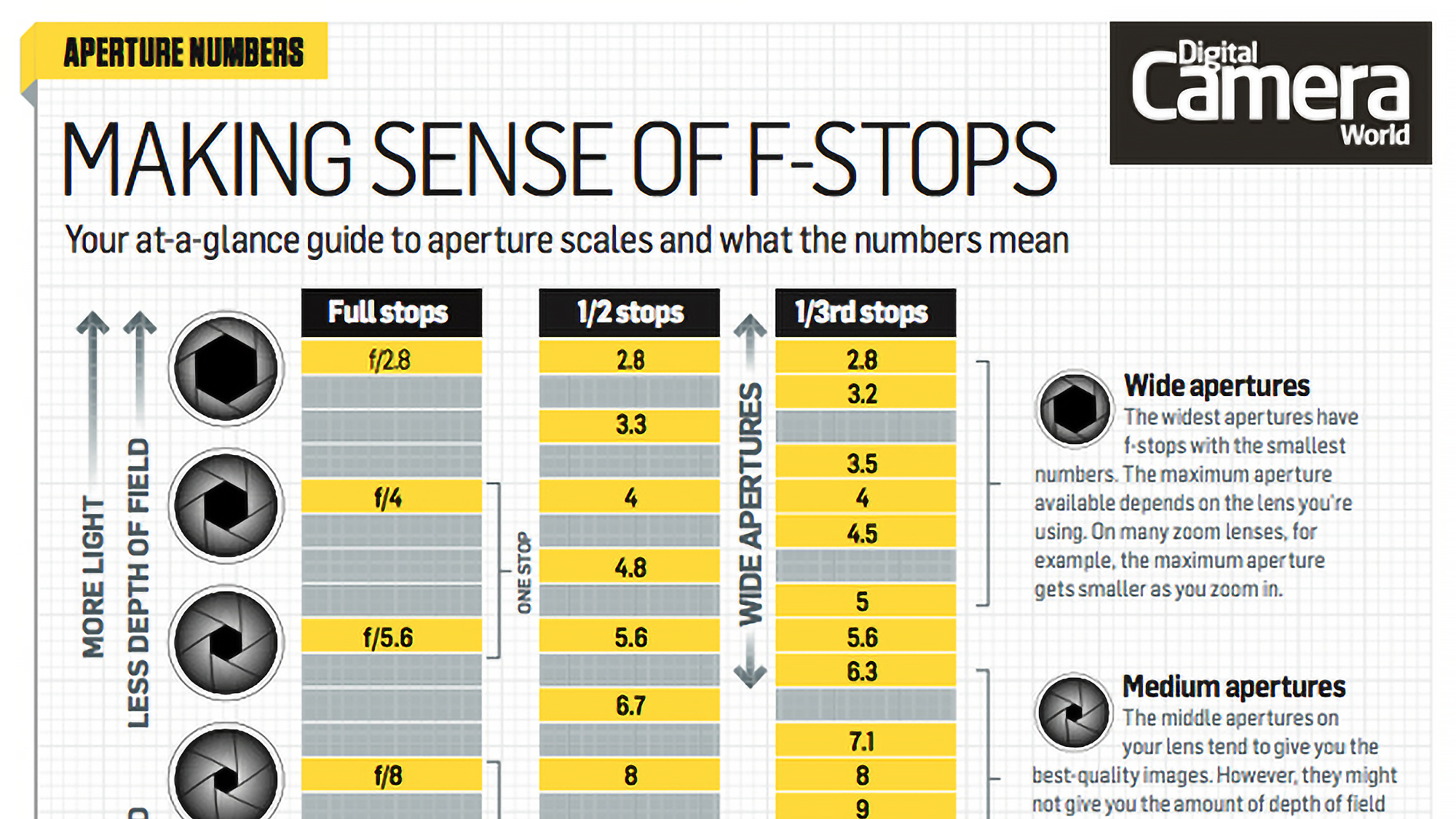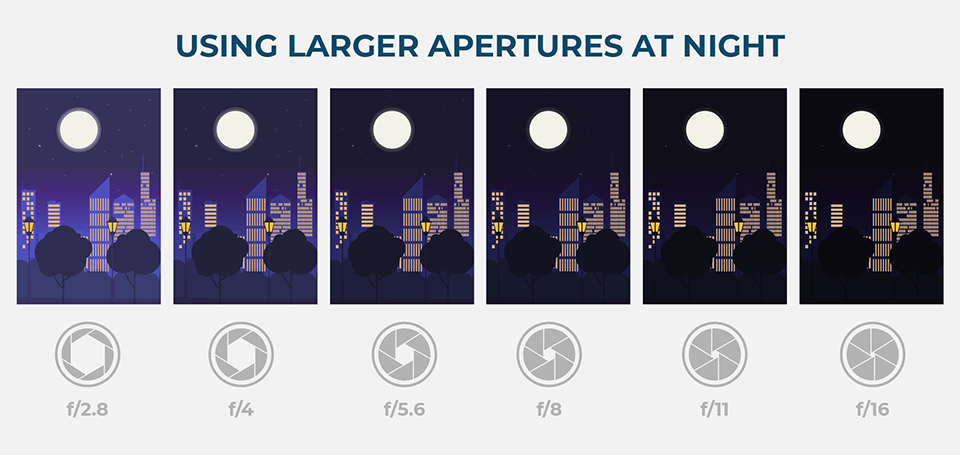How Do You Know Which Aperture to Use
Wide open means to use the largest aperture smallest fnumber. Here are the steps.

Photography Cheat Sheet How To Understand F Stops Digital Camera World
In general the close you get to your subject the less depth of.

. If you need a slightly faster shutter speed go with something closer to f56. The use of a wide aperture creates a narrow depth of field and throws the background out of focus. Depth of Field is the term that refers to how much of the image appears sharp in front of and behind the distance the lens is focused to.
You can also use for sunrises and sunsets. A small aperture has a high number while a large aperture has a small number. Use aperture priority when you need to control depth of field DOF to minimize or maximize the out of focus OOF area.
Setting a large aperture such as f28 gives a narrow depth of field. Like for a persons face you can use this wide aperture and the background will be blurred. A table with a tablecloth works.
For portrait photography you need to have a shallow depth of field because normally you would want a bokeh ie. The aperture you should use depends on how many people or subjects are in your photo. Put your camera on a tripod and set your lens to manual focus.
Aperture also known as fstop is one of the legs of the exposure triangle. But do not use for portrait or product photography. In terms of depth of field they key to remember is this.
Aperture is measured in terms of f-stops also known as f-numbers. Aperture is written as an fnumber because it represents a fraction. For example ¼ cup is smaller than ½ cup.
As the f-number increases the aperture size decreases. For street photography use a semi-zoom lens. Between f11 and f18 you have the main narrow apertures.
How do you know when to use aperture priority or shutter priority. The main use is to isolate an object. The aperture is under f56.
Think of your fstops as the fraction of how far open the diameter is in s iris of the camera. The first graph shows a narrow depth of field as a result of selecting a wide aperture such as f28. The smaller the opening the less light enters the camera.
The larger the number the smaller the aperture. The smaller the number the wider the aperture. If you want to get fancy and dont have a lens you can trust you can probably shoot a gray card and use a light meter so you know the expected intensity or the result photo.
When you focus in on your subject say a persons face the background will blur. Find an object with small details that extends backwards and focus at the center of it. Opening up means to use a larger or depending on context a relatively large aperture small f number.
But other factors also need to be considered as you decide what aperture to use. How to Use Aperture Priority Mode Aperture priority is a semi-automatic mode that allows you to decide on the aperture value and ISO sensitivity you want for your camera while your camera automatically chooses the shutter speed for the proper exposure. Otherwise you can start with an aperture value you think would work best for your picture.
Aperture is denoted by a number such as f14 or f8. If you know basic math remember that the bigger number on the bottom means a smaller measurement. So a 50mm lens with an aperture of f14 would have an aperture diameter of 50140 3571 millimetres.
The wider the aperture lower f-stop the more light you let in and also the shallower the depth of field the narrower the aperture higher f-stop the less light you let in and greater depth of field. Apertures under f56 all the way down to f12. The diameter of an aperture is equal to the focal length divided by the f-number.
So for each stop of aperture say from f28 to f4 its multiplied by 141 14128395. What it is. As shown in the diagram below the smaller the f-number the larger the aperture hole.
The main use of a wide aperture is to isolate a subject. The lower the f-stop the more wide open the aperture the more shallow the depth of field. Typically when you open your aperture wider it will let more light into the camera.
The wider the opening the more light enters the camera. For example in landscape photography you know you want a deep depth of field so you might start with f8 or f11. Converse it can be used to insure maximum image sharpness when DOF and motion sharpness are not an issue.
That really depends on the conditions and on what you want from your image. A 50mm lens with the aperture of f2 a lens opening 25mm wide 50mm2 A 50mm lens with the aperture of f8 a lens opening 625mm wide 50mm8 You can see the full f-stop scale in the image below. F28 f4 f56 f8 f22 etc.
When take a test photo and magnify it you should see pixel-level details as. If youre shooting a landscape and want everything to be in focus a more narrow aperture a. Then second factor is distance.
If youre shooting in lower light youd probably want a wider aperture which is a lower f-number. Notice that wider apertures have lower f-numbers and narrower apertures have higher f-numbers. Aperture is measured in f-stops which are notated on your lens by the letter f followed by a slash and a number.
Use low f-stop for wide open aperture and shallow depth of field. You dont even have to do anything fancy with the image data if the histogram in the two pictures is the same both were taken with the same aperture. If you want to be sure most things will be in focus go with something nearer f11.
I know it sounds a little bit backward but thats the. If youre not sure what aperture to use between f56 and f8 should be your default. Now each full stop corresponds to a halving of aperture size.
Depth of field is the specific front-to-back area or depending on context the scope of the front-to-back area that appears fairly sharp. Aperture will help you create beautiful blurry backgrounds in your photos.

How Aperture Works Howstuffworks

What Is Aperture Understanding Aperture In Photography


No comments for "How Do You Know Which Aperture to Use"
Post a Comment